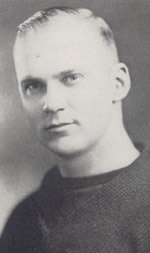 Bomar ("the Blonde Bear") at Vanderbilt around 1922 | |
| No. 7 | |
|---|---|
| Position: | End, tackle |
| Personal information | |
| Born: | January 21, 1901 Bell Buckle, Tennessee, U.S. |
| Died: | June 11, 1964 (aged 63) Nashville, Tennessee, U.S. |
| Height: | 6 ft 1 in (1.85 m) |
| Weight: | 205 lb (93 kg) |
| Career information | |
| High school: | Fitzgerald and Clarke School (Tullahoma, Tennessee) |
| College: | Vanderbilt |
| Career history | |
| Career highlights and awards | |
| |
Robert Lynn Bomar (January 21, 1901 – June 11, 1964) was an American football end in the National Football League (NFL). Bomar played college football, basketball and baseball for Vanderbilt University, following coach Wallace Wade and classmate Hek Wakefield there from prep school, and was a unanimous 1922 All-Southern selection and a consensus 1923 All-American selection in football. The latter season included a first-team All-American selection by Walter Camp, rare for a player in the South. A paralyzing injury ended Bomar's college career, but he quickly recovered and sat on the bench for all of his team's games. He played for the New York Giants in 1925 and 1926, retiring abruptly after a separate injury. Bomar was nicknamed "the Blonde Bear".[1]
He had a later career in law enforcement. In his position as Tennessee's Commissioner of Public Safety and Patrol chief, Bomar supervised the ransacking of black households during the 1946 Columbia race riot. He was the warden of Tennessee State Prison from 1955 until his death, and oversaw several executions. In 1956, Bomar was the first Vanderbilt football player elected to the College Football Hall of Fame.